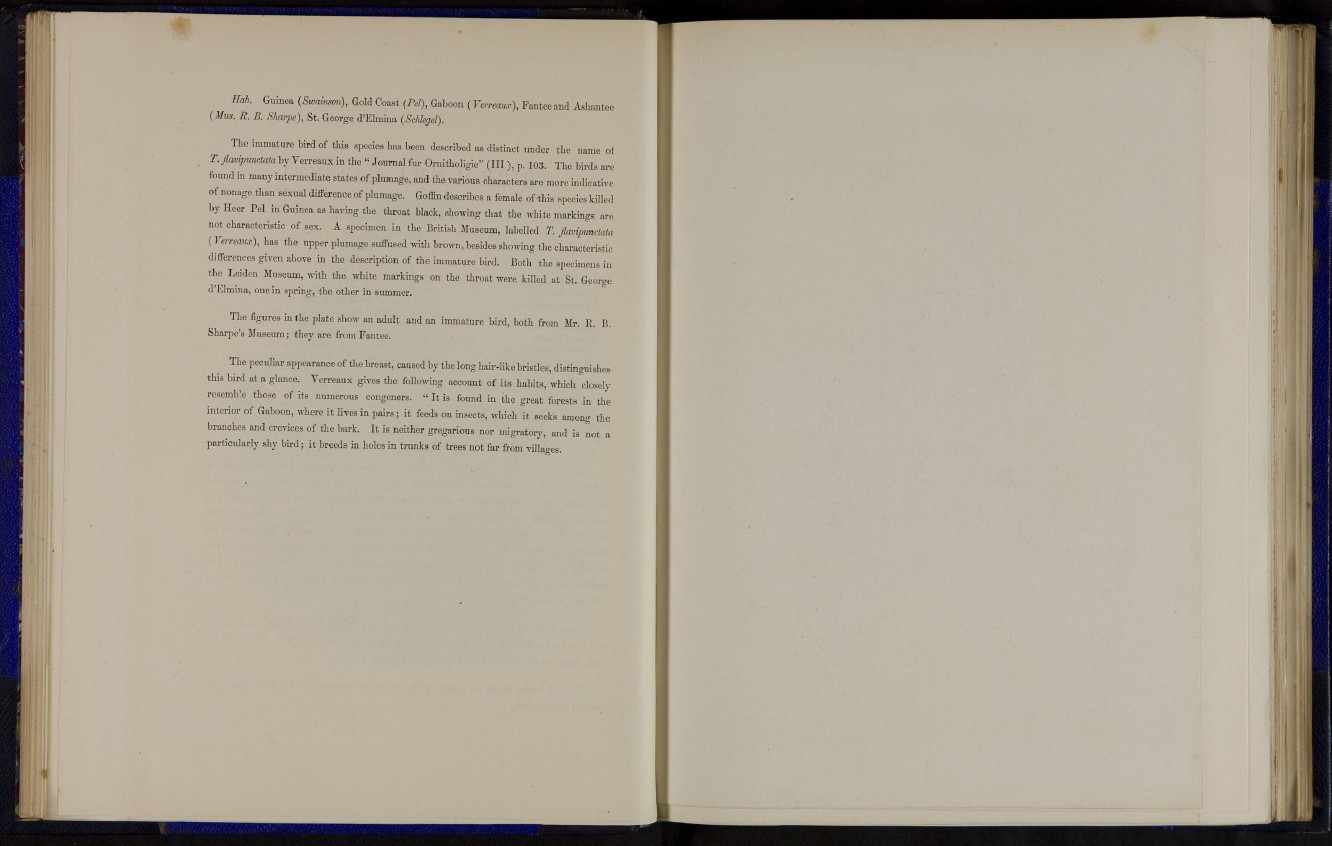
Hob. Guinea (Swamson), Gold Coast (Pel), Gaboon (Verreaux), Fanteeand Ashantee
(Mus. R. B. Shavpe), St. George d'Elmina (Schlegel).
The immature bird of this species has been described as distinct under the name of
T. Jlavtpunctata by Vcrreaux in t h e " Journal fur Ornitholigie" ( I I I ), p. 103. The birds are
found in many intermediate states of plumage, a n d the various characters are more indicative
of nonage than sexual difference of plumage. Goffin describes a female of t h i s species killed
by Heer Pel in Guinea as having the throat black, showing that the white markings are
not characteristic of sex. A specimen in the British Museum, labelled T. Jlavipunctata
(Verreaux), has the upper plumage suffused with brown, besides showing the characteristic
differences given above in the description of the immature bird. Both the specimens in
t h e Leiden Museum, with the white markings on the throat were killed at St. George
d'Elmina, one in spring, the other in summer.
The figures in the plate show an adult and an immature bird, both from Mr. 11. 15.
Sharpe's Museum; they are from Fantee.
The peculiar appearance of the breast, caused by the long hair-like bristles, distinguishes
this bird at a glance. Vcrreaux gives the following account of its habits, which closely
resemble those of its numerous congeners. " I t is found in the great forests in the
interior of Gaboon, where it lives in p a i r s ; it feeds on insects, which it seeks among the
branches and crevices of the bark. It is neither gregarious nor migratory, and is not a
particularly shy b i r d ; it breeds in holes in trunks of trees not far from villages.